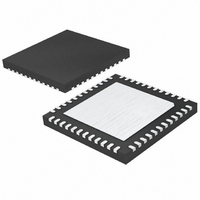LTC2232CUK Linear Technology, LTC2232CUK Datasheet - Page 17

LTC2232CUK
Manufacturer Part Number
LTC2232CUK
Description
IC ADC 10BIT 105MSPS SAMPL 48QFN
Manufacturer
Linear Technology
Datasheet
1.LTC2232IUKPBF.pdf
(28 pages)
Specifications of LTC2232CUK
Number Of Bits
10
Sampling Rate (per Second)
105M
Data Interface
Parallel
Number Of Converters
1
Power Dissipation (max)
535mW
Voltage Supply Source
Single Supply
Operating Temperature
0°C ~ 70°C
Mounting Type
Surface Mount
Package / Case
48-WFQFN, Exposed Pad
Lead Free Status / RoHS Status
Contains lead / RoHS non-compliant
Available stocks
Company
Part Number
Manufacturer
Quantity
Price
Company:
Part Number:
LTC2232CUK#PBF
Manufacturer:
Linear Technology
Quantity:
135
Part Number:
LTC2232CUK#PBF
Manufacturer:
LINEAR/凌特
Quantity:
20 000
APPLICATIO S I FOR ATIO
Figure 4 demonstrates the use of a differential amplifier to
convert a single ended input signal into a differential input
signal. The advantage of this method is that it provides low
frequency input response; however, the limited gain band-
width of most op amps will limit the SFDR at high input
frequencies.
Figure 5 shows a single-ended input circuit. The imped-
ance seen by the analog inputs should be matched. This
circuit is not recommended if low distortion is required.
The 25Ω resistors and 12pF capacitor on the analog inputs
serve two purposes: isolating the drive circuitry from the
sample-and-hold charging glitches and limiting the
wideband noise at the converter input. For input frequen-
cies higher than 100MHz, the capacitor may need to be
decreased to prevent excessive signal loss.
For input frequencies above 100MHz the input circuits of
Figure 6, 7 and 8 are recommended. The balun trans-
former gives better high frequency response than a flux
coupled center tapped transformer. The coupling capaci-
tors allow the analog inputs to be DC biased at 1.6V. In
Figure 8 the series inductors are impedance matching
elements that maximize the ADC bandwidth.
Reference Operation
Figure 9 shows the LTC2232/LTC2233 reference circuitry
consisting of a 1.6V bandgap reference, a difference
amplifier and switching and control circuit. The internal
voltage reference can be configured for two pin selectable
U
U
W
U
input ranges of 2V (±1V differential) or 1V (±0.5V differ-
ential). Tying the SENSE pin to V
typing the SENSE pin to V
The 1.6V bandgap reference serves two functions: its
output provides a DC bias point for setting the common
mode voltage of any external input circuitry; additionally,
the reference is used with a difference amplifier to gener-
ate the differential reference levels needed by the internal
ADC circuitry. An external bypass capacitor is required for
the 1.6V reference output, V
frequency low impedance path to ground for internal and
external circuitry.
The difference amplifier generates the high and low refer-
ence for the ADC. High speed switching circuits are
connected to these outputs and they must be externally
bypassed. Each output has four pins: two each of REFHA
and REFHB for the high reference and two each of REFLA
and REFLB for the low reference. The multiple output pins
are needed to reduce package inductance. Bypass capaci-
tors must be connected as shown in Figure 9.
Other voltage ranges in between the pin selectable ranges
can be programmed with two external resistors as shown
in Figure 10. An external reference can be used by applying
its output directly or through a resistor divider to SENSE.
It is not recommended to drive the SENSE pin with a logic
device. The SENSE pin should be tied to the appropriate
level as close to the converter as possible. If the SENSE pin
is driven externally, it should be bypassed to ground as
close to the device as possible with a 1µF ceramic capacitor.
LTC2232/LTC2233
CM
selects the 1V range.
CM
DD
. This provides a high
selects the 2V range;
17
22323fa














